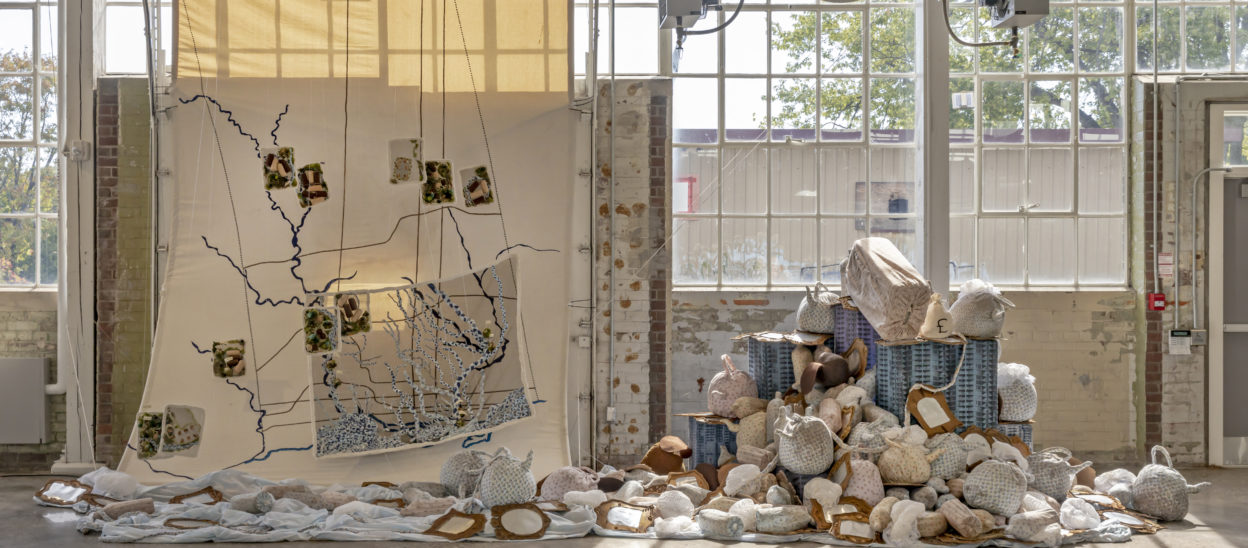
By Kayleigh Robinson
In the turmoil that is current politics, art is one of the strongest tools people have at their disposal.
With the closing of the Toronto Biennial of Art at the Small Arms Inspection Building in Mississauga and the taking down of the pieces that had been a part of my work life for the last two months, I was suddenly sent back to my Grade 11 History class, where one of my classmates said that art had no meaning anymore, and that its only use was commercial.
What?
I thought this at the time, how disconnected do you have to be to think that no one is creating good art anymore? That art has no meaning? Why do people only think art is apolitical? For me, as someone who was an Art Student, taking all the visual art classes my school had to offer, this was ridiculous. As someone who has spent a good chunk of my time at a contemporary art exhibit in the last few months, this idea became even more ridiculous.
The theme of the Biennial this year was our relationship with the land, a hot topic in the political discourse as of late. The exhibition featured a mix of Indigenous and non-indigenous artists from around the world. My personal favourite, a mixed-media piece by Jumblies Theatre & Arts with Ange Loft called Talking Treaties, was in direct conversation with the Small Arms Inspection Building as it discussed Treaty 13, which covered the land where the building now sits. The piece consisted of a large cloth map that showed what the land looked like when the Treaty was signed, cloth representations of the goods exchanged by the Europeans, and a video series depicting the treaty signing with Indigenous actors. Also included in this were workshops on the weekend were visitors were encouraged to embroider a square of fabric in response to the piece. These squares will appear in the next Biennial, as the group plans to make a quilt out of them.

(Talking Treaties, Jumblies Theatre & Arts with Ange Loft, Mixed Media, 2019)
So many of the pieces in the Biennial require the viewer to engage, not just with the artwork, but with their place on the land they stand on. Art is unassuming. Most people view it as a visual commodity, where they’ll go to a gallery and look, but won’t learn anything. Like the guy in my high school history class, they have been led to believe that only old art is valuable. In interacting with the art community in the Toronto/Mississauga area I’ve seen otherwise. The works on display all meant something, and they all resonated with people. Part of my job while there was manning the front desk, and hearing the snippets of conversation people were having while they left showed my that this exhibition made them think, like it was supposed to. The artists who took part in the Biennial showed that art is still important, is still political, and still has meaning - no matter what 11th graders may think.
The world is terrible, the planet is dying, but people are trying to change that. If you really feel hopeless, the best thing to do is to go out and make art - or support it.
